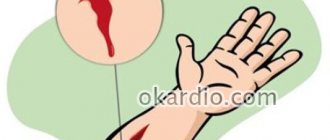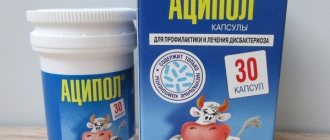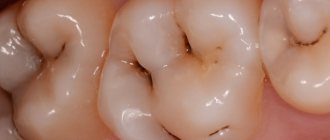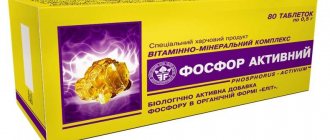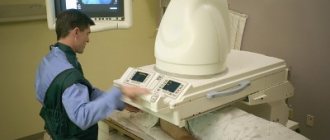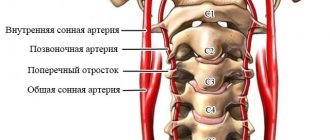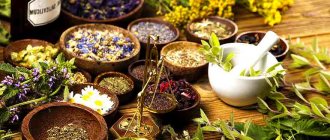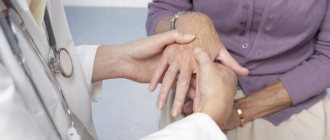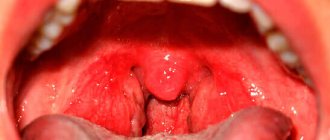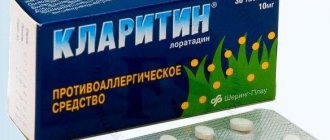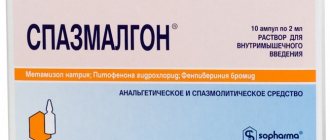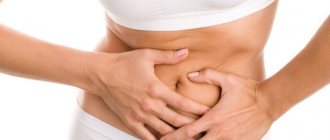What kind of drug is Chlorhexidine bigluconate?
The drug Chlorhexidine bigluconate belongs to the group of disinfectants for external use and is a popular and inexpensive antiseptic. It is often called "Chlorhexidine". The price for a bottle of 0.05% solution in a volume of 100 ml is from 15 rubles. The composition includes the substance - chlorhexidine bigluconate 0.5 mg, water up to 100 ml. In appearance, the solution is an absolutely transparent liquid that is almost odorless.
Much less often you can find a 20% solution of the drug on sale; it is used only in medical institutions.
In addition to bottles with a liquid form of the medicine, chlorhexidine bigluconate comes in a large number of other forms - suppositories, lozenges, ointments, vaginal capsules, gels, sprays.
The active component has a strong antiseptic effect, it works bactericidal. As a biguanide derivative, chlorhexidine destroys cell membranes after contact with bacterial cells. Once the integrity of the membranes is compromised, microbial cells die. In medical practice, chlorhexidine bigluconate is used against the following types of bacteria:
- Neisseria;
- Trichomonas;
- bacteroid;
- chlamydia;
- gardnerella;
- coccal microbes.
Among other things, chlorhexidine copes with ureaplasma and has a negative effect on the development of Proteus and pseudomonads. The herpes virus is also not resistant to the action of an antiseptic, and it does not affect all other viruses. The drug is also useless to use against fungi - they are practically insensitive to it.
Interaction
If the pH of the medium exceeds 8, a precipitate forms. If hard water was used when preparing the solution, its bactericidal effect is reduced.
Does not combine with anionic compounds, in particular soap.
Not compatible with chlorides, carbonates, phosphates, sulfates, borates, citrates.
Under the influence of the drug, the sensitivity of microorganisms to the influence of neomycin, kanamycin, chloramphenicol, and cephalosporin increases.
Ethyl alcohol enhances the bactericidal effect.
https://www.youtube.com/watch?v=ytcopyright
Chlorhexidine bigluconate is pharmaceutically incompatible with alkalis, soap and other anionic compounds (carboxymethylcellulose, gum arabic, colloids); compatible with products that contain a cationic group (cetrimonium bromide, benzalkonium chloride).
Chlorhexidine bigluconate increases the sensitivity of bacteria to cephalosporins, neomycin, kanamycin, chloramphenicol. Its effectiveness is enhanced by ethanol.
Indications of the medicine
The drug is widely used in surgery, nursing, hospitals and clinics. It is used to disinfect hands before examining patients, before performing interventions, and also treats instruments and areas for surgery. It is also used in surgery to prevent infection of wounds; they are treated with more concentrated solutions. Even purulent wounds are treated with chlorhexidine, because it does not lose its properties in the presence of pus and blood. It is used to treat burns, including infected ones, and to prevent infection.
In dentistry, Chlorhexidine bigluconate is also often prescribed to patients. They rinse the mouth for the following indications:
- removal of a tooth;
- excision of a cyst, abscess;
- treatment of periodontitis, gingivitis;
- treatment of pulpitis, alveolitis;
- therapy of stomatitis, including aphthous;
- processing of dentures.
A very popular medicine in gynecology. After sex, it is used to prevent infection with gonorrhea, trichomoniasis, and chlamydia. The drug will reduce the risk of infection with genital herpes and syphilis.
The risk of HIV infection does not decrease with the use of Chlorhexidine!
In gynecology, a woman’s genitals are treated before operations, diagnostic procedures, and installation of an IUD. In urology in men and women, the drug is used for urethritis, in men - for balanitis, balanoposthitis, utetroprostatitis. Chlorhexidine bigluconate also treats skin diseases associated with bacterial infection. In ENT practice they treat the throat and ears.
Instructions for use
Most often, the drug is used to rinse the mouth and throat. It should be used externally and not taken internally. Due to the absence of odor or pronounced taste, rinsing will not cause any discomfort. For sore throat, chronic tonsillitis, pharyngitis, the method of treatment is as follows:
- purchase Chlorhexidine 0.05%, or dilute a 20% solution to the appropriate concentration;
- take about 2 tablespoons of solution into your mouth;
- gargle, throwing your head back, for about 30 seconds;
spit out the solution; repeat therapy 5 times a day or as directed by a doctor;
for stomatitis and dental diseases, rinse your mouth without throwing your head back;
course - 5 days or until recovery. Immediately after rinsing, do not eat or drink water for at least 30 minutes. It is especially effective to carry out therapy at night, because the drug acts for at least 18 hours, destroying the infection. Chlorhexidine should not be used together with other antiseptics - it may dry out the pharyngeal mucosa.
The medicine is also applied undiluted to the skin and wounds.
The drug is applied to the affected skin using a cotton swab. To treat felon, it is advisable to make a gauze bandage, then moisten it generously with the solution for several hours. For burns, it is better to use a spray form; in gynecology and urology, special nozzles are used. So, for urethritis, 2 ml is injected into the urethra twice a day for a week. To prevent STIs, no later than 2 hours after sex, 3 ml is administered to men (urethral), 2 ml to women urethral, 10 ml vaginally. The external genitalia are also treated.
special instructions
To increase the therapeutic effect, it is recommended to heat the solution. It is forbidden to apply an antiseptic to the lining of the brain in case of open head injuries. Do not allow the antiseptic solution to accumulate in the folds of the skin.
Before each change of the bactericidal dressing, the damaged areas should be washed with water to remove any remaining medication. The accumulation of solution in the wound can cause the development of an adverse allergic reaction.
The drug has no effect on the central nervous system; there are no restrictions on driving vehicles or working with complex mechanisms.
It is not recommended to use the medication independently in the treatment of ear infections, especially if there is a need to rinse the cavity of the inner ear. The procedure is performed only by a doctor.
If a large amount of solution enters the stomach, you must immediately take any sorbent.
Can children take Chlorhexidine 2?
There are no age restrictions for use. Use caution when treating the skin of infants, because... The skin is delicate, and a large amount of the drug or its frequent use can lead to skin burns.
Chlorhexidine 2 should be used with caution when treating the skin of infants, because... the skin is delicate.
Use during pregnancy and lactation
You should consult a doctor if you need to treat the oral cavity or genitals with the solution. External use has no restrictions. It is forbidden to treat nipples with this antiseptic immediately before breastfeeding.
Contraindications and side effects
The medicine has no restrictions on its use based on age; it is allowed during pregnancy and lactation, as it acts only locally. But in children under 5 years of age, Chlorhexidine bigluconate is used with caution - allergic reactions are possible. You will have to refuse therapy in case of any intolerance. Also use carefully:
- for allergic skin diseases;
- with atrophic processes on the skin.
Do not use the drug for nasal therapy - there is a high risk of the emergence of resistant strains of infection, and there is also a danger of nosebleeds. Due to the drying effect, it is not advisable to use the product for sinusitis and diseases of the organs of vision. Side effects with a course of less than 7 days rarely occur; dryness and tightness on the mucous membranes are sometimes observed. When treating dental diseases, darkening of the enamel is rarely recorded, which goes away without the use of bleaching.
Candidiasis of the anus
- 1 Etiology and pathogenesis
- 2 Provoking factors 2.1 Invasive intestinal thrush
- 2.2 Candidal dermatitis
- 3.1 Features in children
- 5.1 Medications
Have you been trying to cure FUNGUS for many years?
Head of the Institute: “You will be amazed at how easy it is to cure fungus by taking the product every day for 147 rubles ...
Read more "
Anal candidiasis is a rather unpleasant disease with uncomfortable symptoms. In its symptoms, the disease is similar to other ailments in the anus or to parasitic infestation, which is why patients, without consulting a doctor, prescribe treatment to themselves, which does not bring visible results. To make a diagnosis, laboratory tests are required, which can only be prescribed by an experienced doctor. Thanks to the tests, it is possible to make a correct diagnosis and successfully treat a fungal infection of the anal area.
Etiology and pathogenesis
Candidiasis is caused by the opportunistic fungal microorganism Candida.
Since Candida is found in small quantities on the mucous membranes and skin of all healthy people, the pathogenicity of this fungus is determined not by its presence, but by its quantity. A fungal infection lies latent in the human body until the person’s immune system fails. As soon as the immune system weakens, the fungi begin to multiply and anal candidiasis begins. Return to contents
Provoking factors
Anal fungus can be caused by internal and external factors:
- candidiasis that has developed in the gastrointestinal tract;
- primary anal thrush of the skin.
Return to contents
Invasive intestinal thrush
A fungus that parasitizes the intestines and affects the rectum.
Anal thrush is often caused by its intestinal counterpart. Fungal pseudomycelium penetrates the mucous membrane of the intestinal walls, reaching the rectum. Depending on the location, the invasion can be:
- focal;
- limited;
- diffuse.
Intestinal candidiasis can be caused by the following factors:
- dysbacteriosis;
- avitaminosis;
- tuberculosis;
- diabetes;
- allergic reactions;
- acute intestinal infections;
- condition after long-term use of antibiotics or hormones;
- HIV;
- joint diseases;
- chemotherapy in oncology.
Return to contents
Candidal dermatitis
Itching in the anus can provoke advanced vaginal candidiasis.
If thrush around the anus is not related to intestinal candidiasis, it means that primary candidiasis dermatitis occurs - fungal infection of the skin and mucous membrane of the anus. The disease is more often observed in people who are obviously overweight, as well as in homosexuals due to non-traditional sexual contacts. Anal thrush is also observed in patients with vaginal candidiasis.
Causes of the disease:
Pensioners! Don't cut fungal nails! They are derived simply: take 9 grams...
Military doctor: So that the soldiers do not have fungus, they 2 times a day...
- wearing close-fitting clothes and underwear made of synthetic fabrics;
- the presence of parasites in the human body;
- frequent diarrhea or constipation;
- failure to comply with hygiene rules.
Return to contents
Symptoms of anal candidiasis
Candidiasis of the anus is manifested by discomfort in the anus: the skin around the anus itches and looks inflamed, the itching intensifies after bowel movements.
Upon visual inspection, the mucous membrane looks hyperemic and loose, and a white coating and irritation are found near the anus. If the root cause of thrush in the anus is a fungal infection of the gastrointestinal tract, the symptoms include pain during bowel movements, as well as a false urge to go to the toilet. Mucus and bloody inclusions may be observed in the stool. The disease is accompanied by excessive gas formation in the intestines, changes in the quality of stool (too liquid or hard).
Return to contents
Features in children
Long-term use of a diaper creates a favorable environment for the growth of bacteria.
Often, anal candidiasis in children appears as a result of long-term antibiotic therapy and decreased immunity. The child experiences redness around the anus, whitish, cheesy discharge from the mucous membrane, and the baby may complain of pain during bowel movements. Infants are especially susceptible to the disease due to frequent wearing of diapers.
Return to contents
Diagnostic measures
Only a doctor in a medical facility can determine candidiasis around the anus. A thorough visual examination will be required to obtain an overall clinical picture. It is recommended to visit a gynecologist for women, and a urologist for men. In order for the treatment of thrush in the anus to be as effective as possible, it is important to exclude concomitant diseases. For these purposes, tests for HIV, scraping for enterobiasis, and stool testing for the presence of parasites are prescribed. For a reliable result, it is recommended to test feces three times for worm eggs.
Other recommended laboratory tests:
- stool bacterioscopy;
- stool culture for sensitivity to antifungal drugs;
- OAM, UAC and blood sugar test;
- sphincterometry;
- fibrocolonoscopy.
Return to contents
Treatment of fungal infection of the anus
Drug therapy is determined by the attending physician.
Treatment of anal candidiasis is possible after an accurate diagnosis and determination of the cause. To treat perianal candidiasis caused by invasive thrush, it is important to use systemic antimycotics, to which Candida fungi are sensitive. To relieve the symptoms of anal candidal dermatitis, topical agents are used. Traditional medicine made from natural ingredients will help alleviate the manifestation of the disease.
Return to contents
Medications
Candida albicans fungi are sensitive to nystatin, clotrimazole, natamycin, ketoconazole, amphotericin B, fluconazole and itraconazole, so it is advisable to treat mycosis in adults with drugs based on these active ingredients. Medicines with systemic effects with a description of the active ingredients based on them are presented in the table.
| Drug name | Active substance |
| "Diafla" | Fluconazole |
| "Diflucan" | |
| "Futsis" | |
| "Livarol" | Ketoconazole |
| "Nizoral" | |
| "Pimafucin" | Natamycin |
| "Orungal" | Itraconazole |
| "Irunin" |
Local medications cause minimal harm to the body.
Anal thrush is treated with local antimycotic agents:
- "Kandibene";
- "Candide";
- "Levarin";
- "Clotrimazole";
- "Nizoral";
- "Exoderil".
Treatment of skin and mucous membranes for thrush is recommended using antiseptics:
- "Chlorhexidine";
- "Miramistin".
Return to contents
Folk recipes
Anal thrush causes a lot of trouble. Remedies using natural ingredients will help alleviate the symptoms of the disease. Sitz baths based on medicinal herbs - chamomile, oak bark, calendula, St. John's wort, burdock - are good for anal thrush. A solution of soda and iodine will relieve itching and burning in the anal area. Honey compresses are useful for treating inflammation around the anus. Tea tree essential oil in combination with olive oil will relieve irritation and eliminate signs of fungal infection.
Proper nutrition is extremely important in treating thrush. It is better to avoid fried, fatty, and spicy foods in your diet. You need to enrich your diet with fresh fruits and vegetables. Greens, nuts, lean meat, fish will ensure the supply of all the necessary vitamins and minerals sufficient for the healthy functioning of the body. The presence of fermented milk products in the diet is important for effectively combating thrush in the anus.
